Are you a first-time power drill user? Don’t worry—I’ve got you covered! From understanding what each button does to choosing the right bits, I’m here to walk you through the basics step by step.
One thing I’ve always emphasized here on The DIY Playbook is that you can figure out how to tackle just about anything with a bit of practice and determination.
Before I started this blog, I didn’t even own a power drill or understand how one worked. But now, I can confidently say this tool is a game-changer that everyone should have in their toolkit. It’s that essential.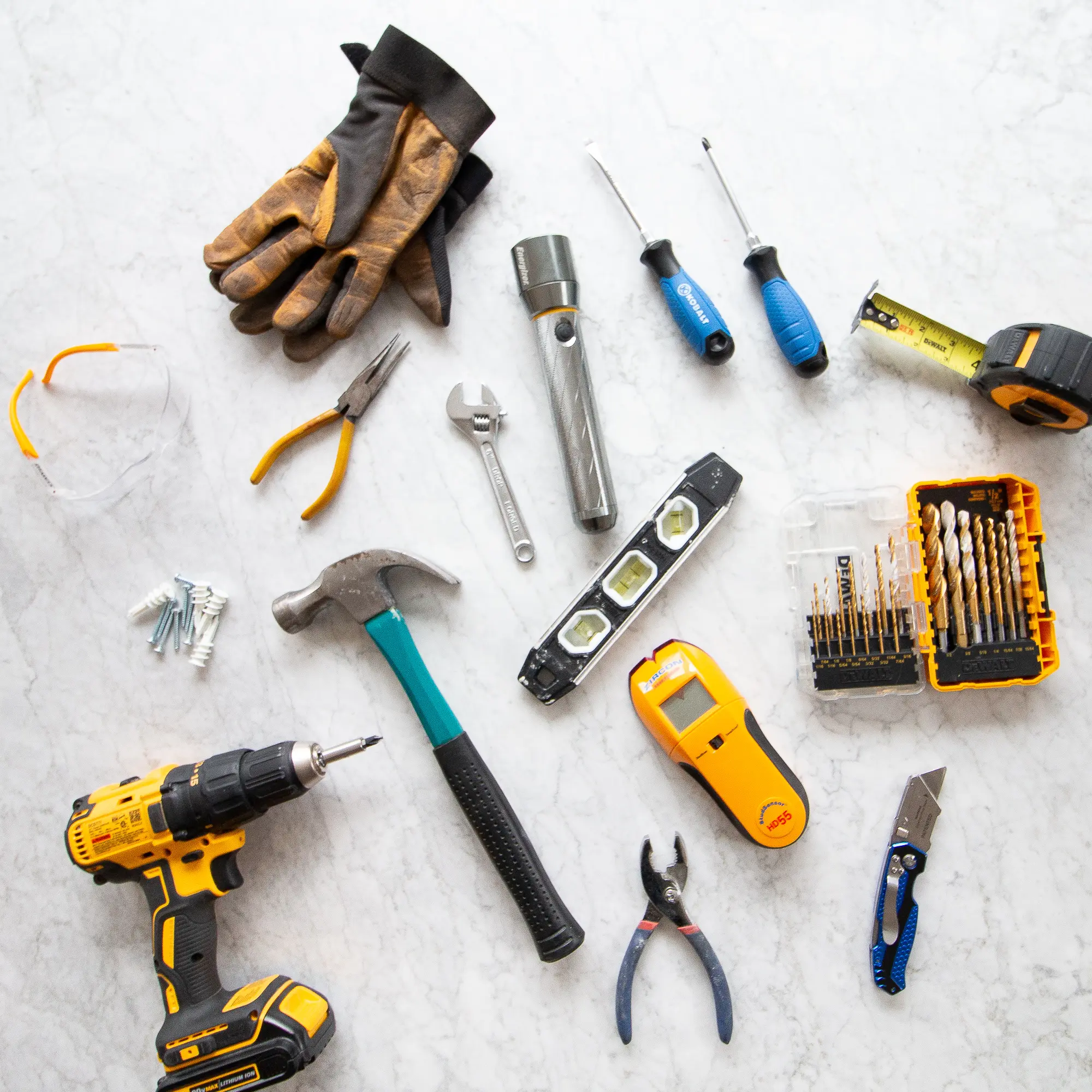
Even if you’re in a rental, a power drill will come in handy to swap out hardware, hang a mirror, or put furniture together. 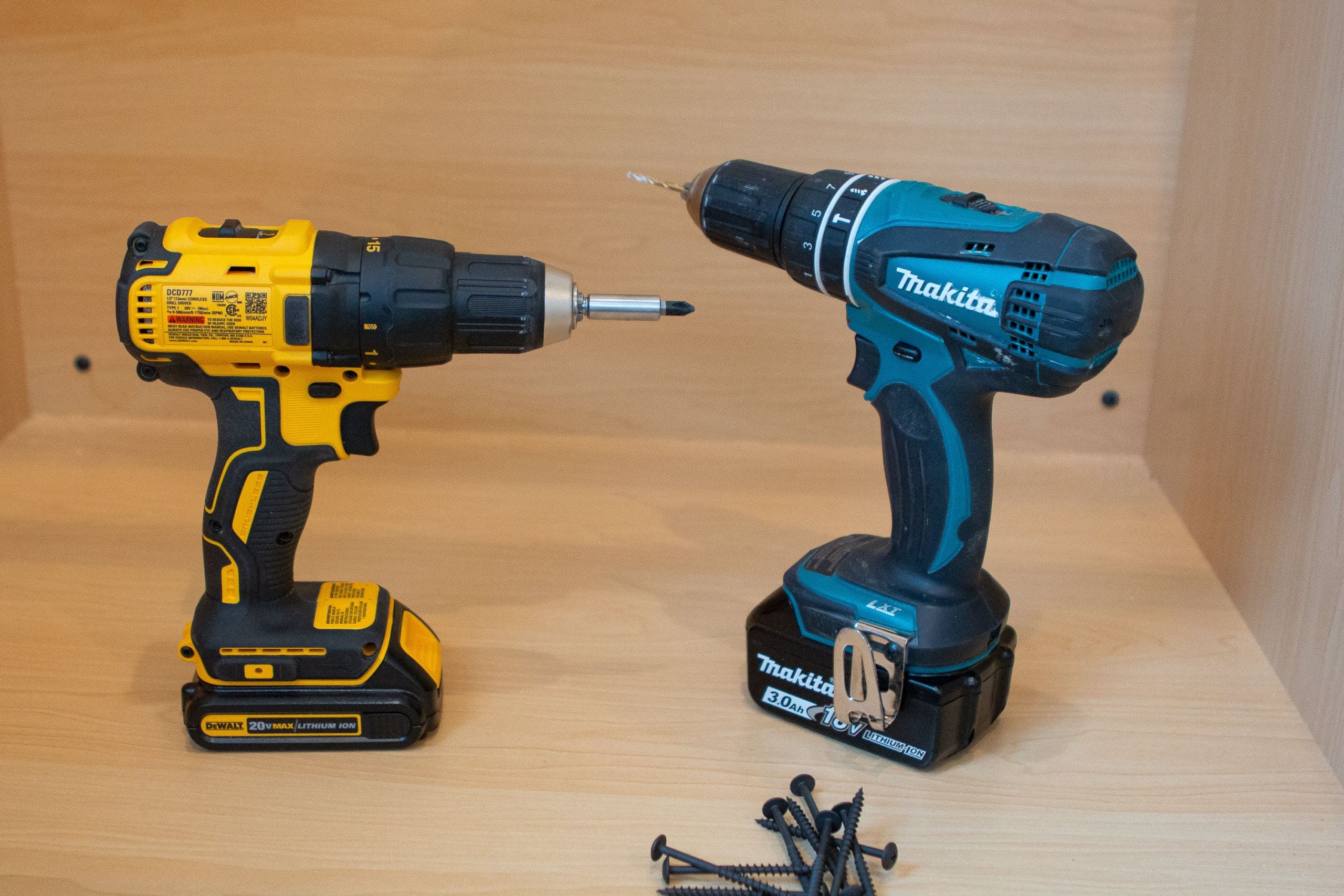

If you remember this blog post about the essential tools for homeowners, a power drill is at the very top of my list. But I want to take it one step further – I think a power drill is essential for everyone, homeowner or not.
Power Drill Basics
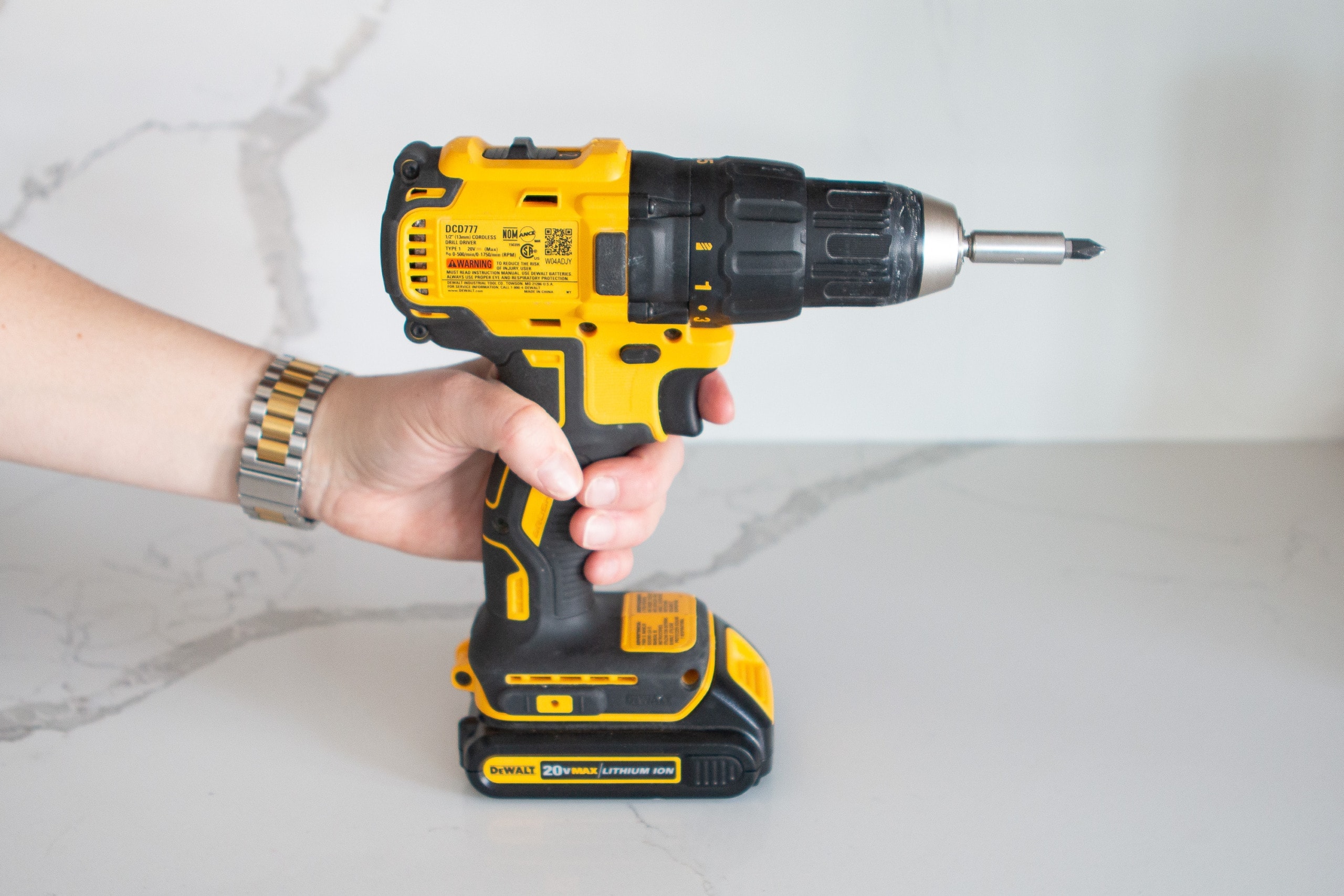

Today, I’m breaking down all the essential details of this must-have tool. We’ll cover every button, accessory, and everything else you need to know about the power drill.
If you’re a seasoned DIYer, this might serve as a helpful refresher. But if you’re new to tools and DIY projects, I hope this guide gives you the confidence to grab your drill and use it more often.
What Does A Drill Do?
A power drill is a versatile tool that, when paired with the correct bit, can bore holes into different materials or fasten things together. A cordless model runs on a rechargeable battery, which means you’re not stuck near an outlet—super convenient!
What’s The Difference Between a Drill, Impact Driver, and Hammer Drill?


For most projects, a drill and impact driver are all you’ll need, but a hammer drill is perfect for the tougher, specialized jobs.
What Projects Do I Need It For?
Ummmm…pretty much anything and everything! A drill can come in handy if you’re putting a piece of furniture together and you need to fasten parts together with screws.


It also comes in handy if you want to hang something on a wall and need to create holes for anchors. Or it works well if you need to hang window treatments. Or it’s great for more advanced projects, like our DIY built-ins, when we used two drills at a time, constantly!
It’s hands down one of the most convenient tools to have, and it will make any DIY project move a whole lot faster.
How Much Does It Cost?
The price varies, depending on the model, the power, and whether you buy it with extra accessories. I usually recommend opting for an 18-20 higher voltage model (mine is 20-volt), just because that will work for just about every project. But if you don’t want to spend as much, a 12-volt model can work for lots of home projects.


My 20-volt drill comes with a drill, storage case, charger, and a battery for $99. But here’s another model for around $70. Or you can buy a drill that comes with all of the bits, accessories, and an extra battery pack for between $150-$200.
How Should I Store It?
Mine came with a nice little zippered bag to hold all of the accessories, because there is a lot that comes with a drill! This little bag holds the drill, the drill charger, and all of my drill bits.
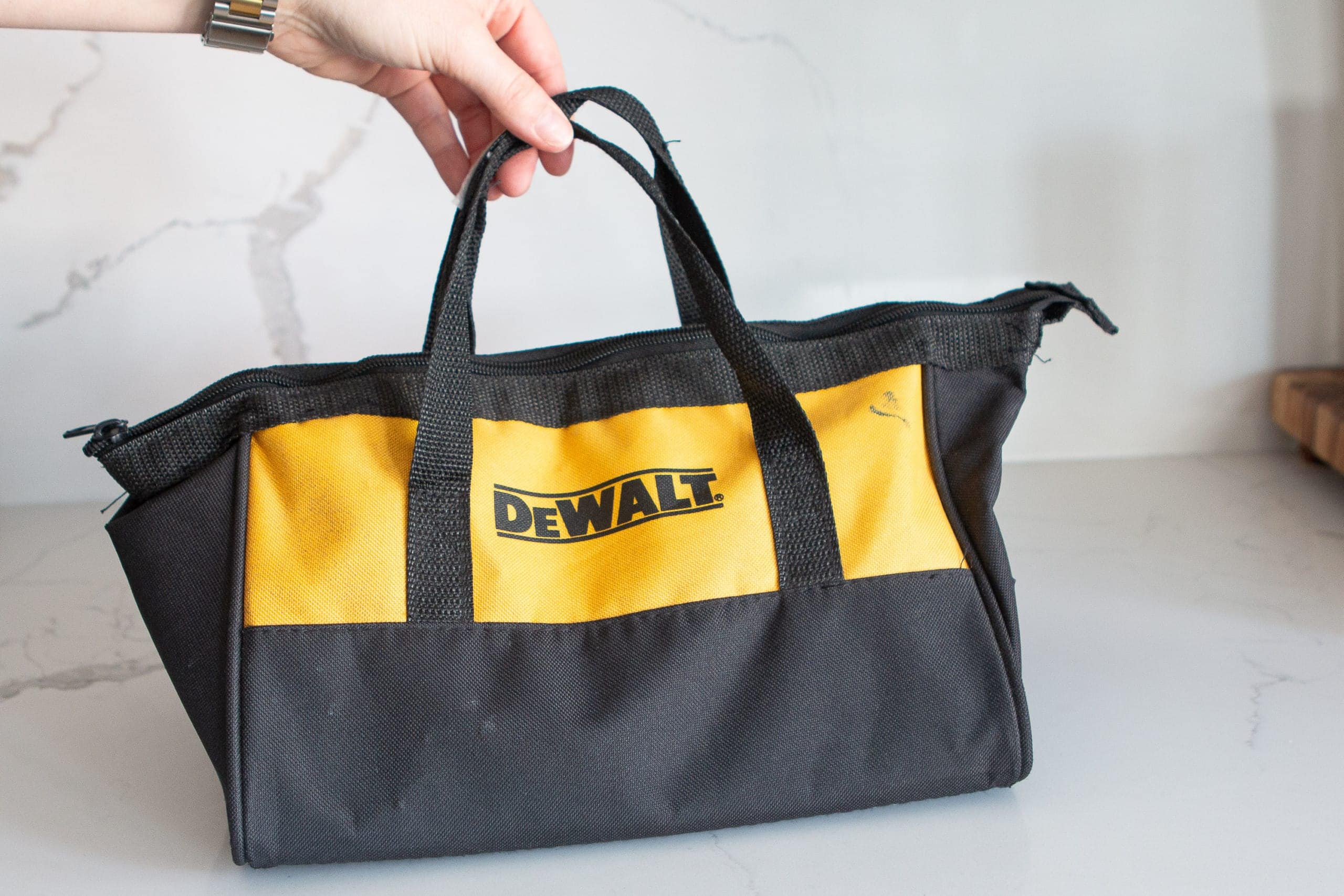

It’s like a handy dandy little purse full of DIY goodness. It’s nice because I can just grab this bag and I know I’ve got everything I need inside.
How Often Do I Need To Charge It?
Because I’m not using my drill all day, every day, I feel like I don’t need to charge it that often. I can install some shelves, put a piece of furniture together, and hang a gallery wall and my drill will still be alive and kicking!


But it does give you more power and “juice” if it is fully charged. So after a big project, remember to charge that baby up. You’ll thank yourself when you go to start that next project and it’s all ready for some DIY action
When investing in new tools, consider buying the same brand. We own lots of Dewalt tools, specifically because they use interchangeable batteries. We now have lots of Dewalt batteries, so all of our tools are always powered up and ready to go.
Let’s Talk About Drill Bits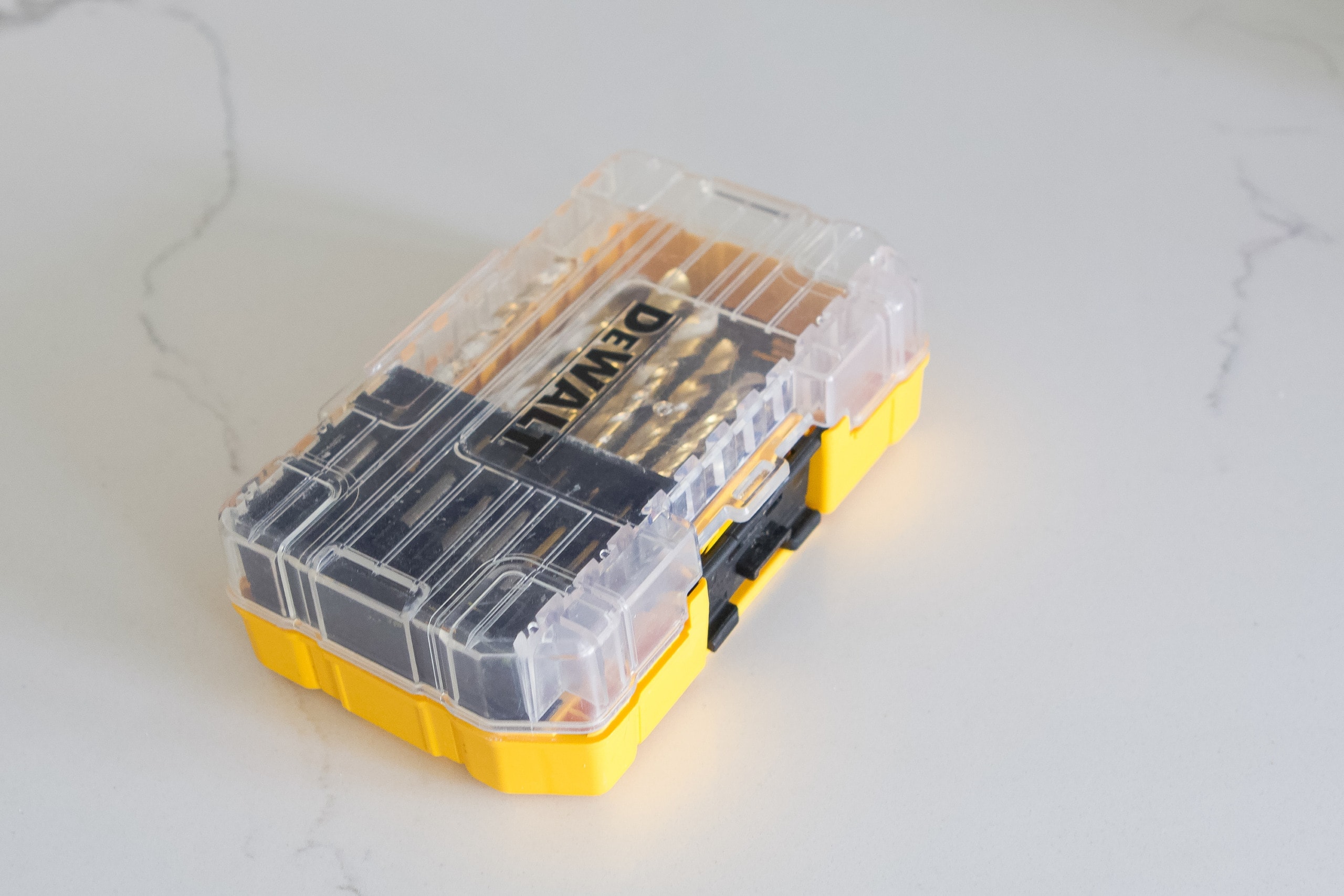

What’s the deal with all the bits? I know—it can be a little confusing!
At first, I thought once you had a drill, you just threw on one attachment and were good to go. But nope, there’s more to it than that.
You’ll need different bits and accessories, depending on the project you’re tackling, like screwdriver bits for driving screws or twist bits for drilling. Let’s break down the various materials and types of bits so you know exactly what to use and when.
Screwdriver Bits


Some bits are inserted directly into the drill chuck, but most need to be put into the bit holder. The bit holder is a long metal piece that’s magnetic at the end, which makes swapping bits super easy.
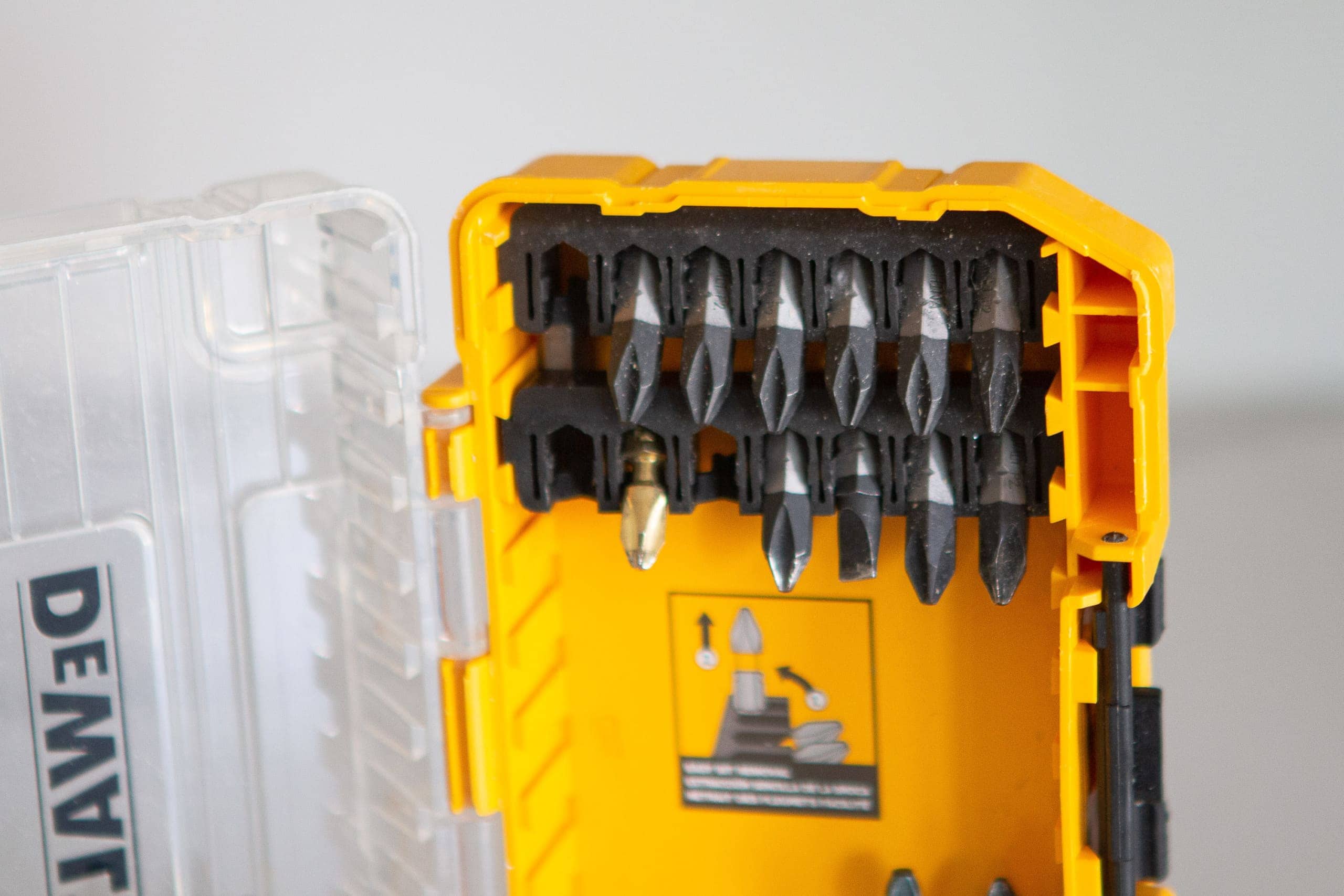

I keep a large case of various bits, like the smaller ones shown above, and these fit right into the bit holder. Screwdriver bits work just like a regular screwdriver, with both flat head and Phillips head options, available in different sizes, depending on your project.
Pilot Bits
These are used to drill pilot holes into different types of materials. I mainly rely on them when drilling into walls.


For example, I’ll create a deep hole with a twist drill bit, then insert an anchor if I’m hanging something heavy. (For more info, check out this blog post on wall anchors.)
I keep a variety of metal drill bits with different diameters in this handy kit.
Countersink Bits
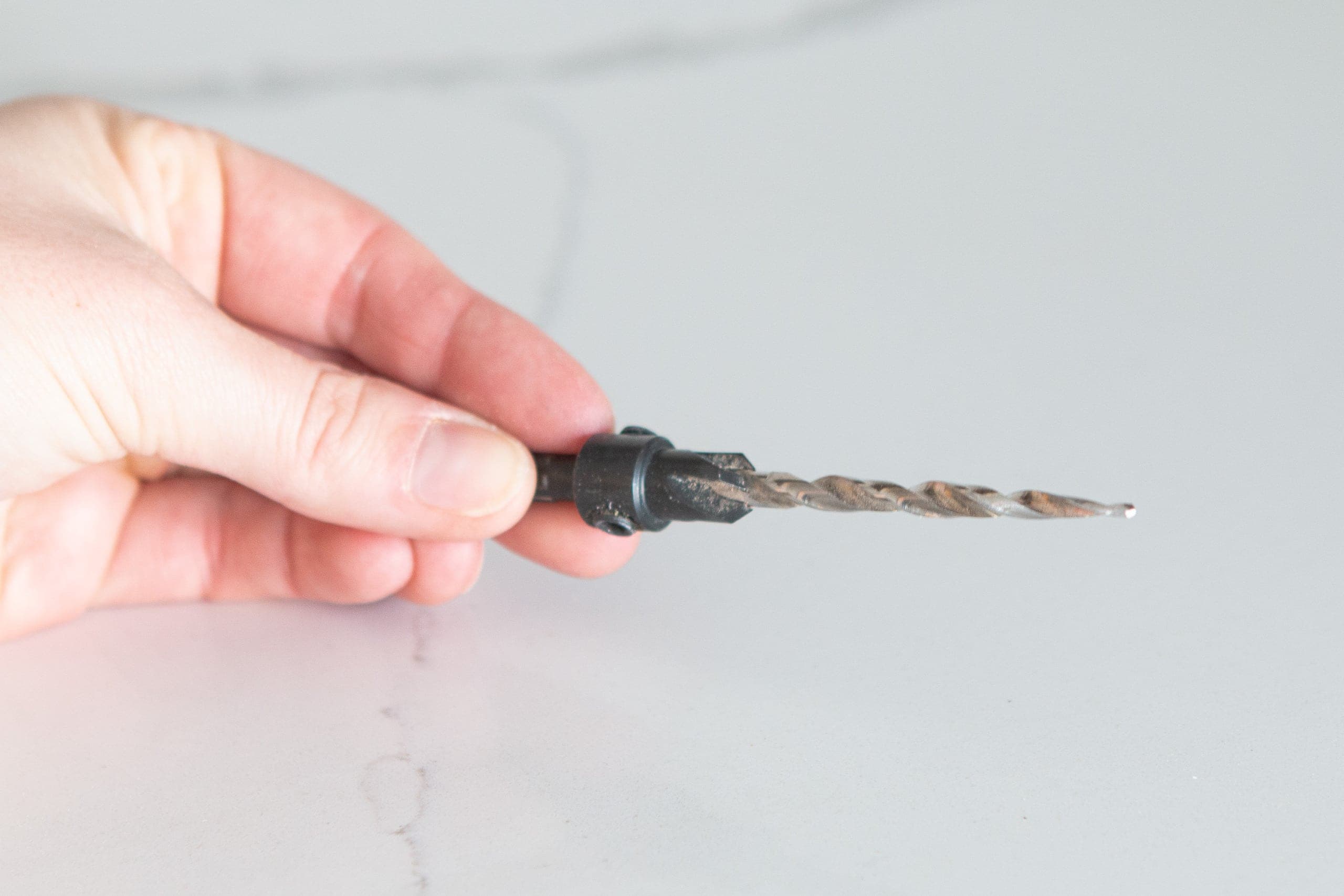

A countersink bit is perfect when you want a screw to sit flush with the surface. You’ll notice that the bit gets wider as it goes deeper—this allows the top of the screw to sink below the surface, so it doesn’t stick out. I used this bit when making my DIY bathtub tray to ensure the screws wouldn’t pop out of the bottom.
Paddle Bits
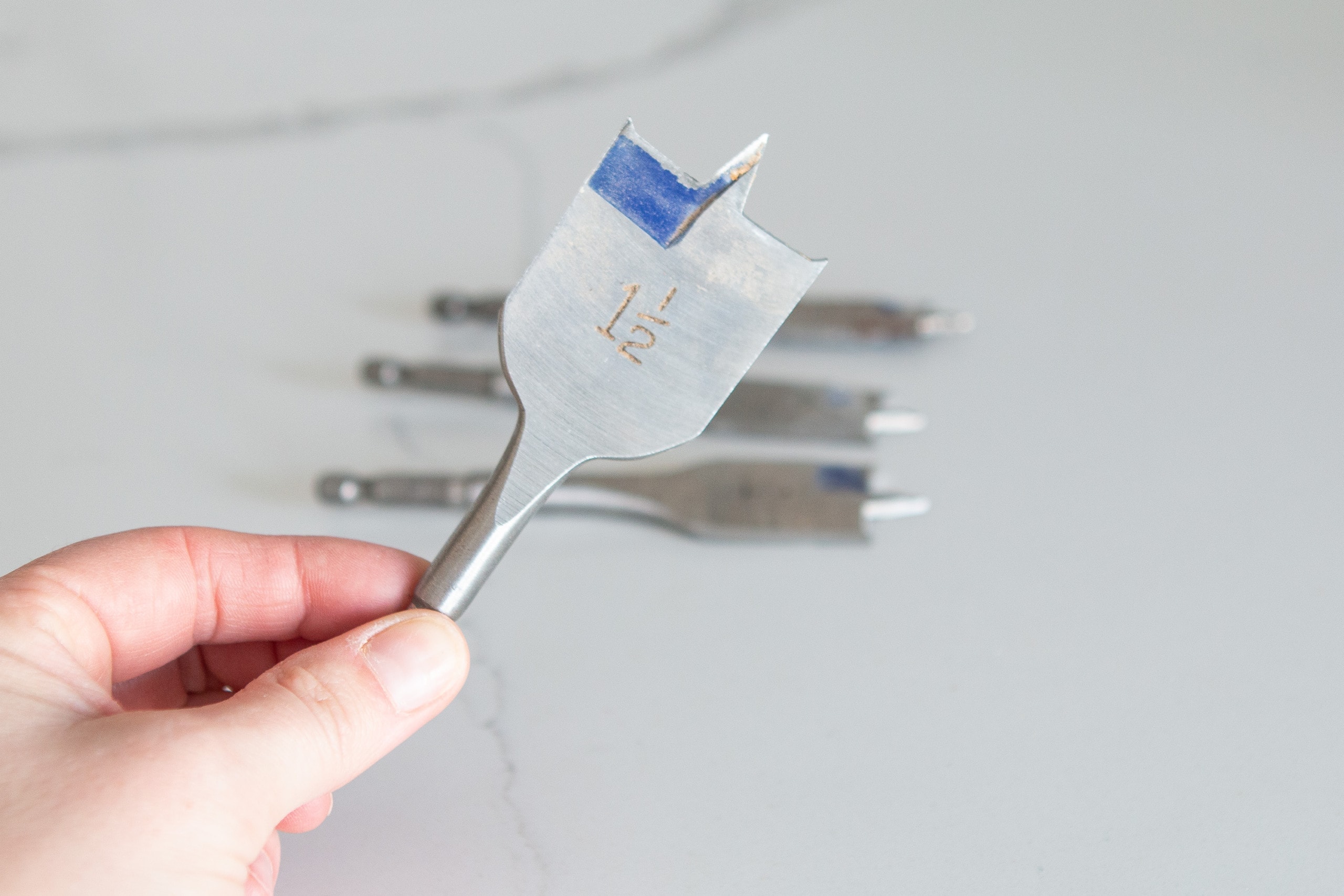

Out of all the bits, I probably use paddle bits the least, simply because I don’t tackle many projects that require them. A paddle bit (also known as a spade bit) is used to bore large holes. They come in various sizes, and the diameter of the hole depends on the size of the bit.
To use one, place the tip at the center of where you want the hole, apply pressure, and drill all the way through until you’ve got a clean, large circle. We used a paddle bit in our office cabinets to create a hole for pulling cords and wires through.
How To Change Out Bits
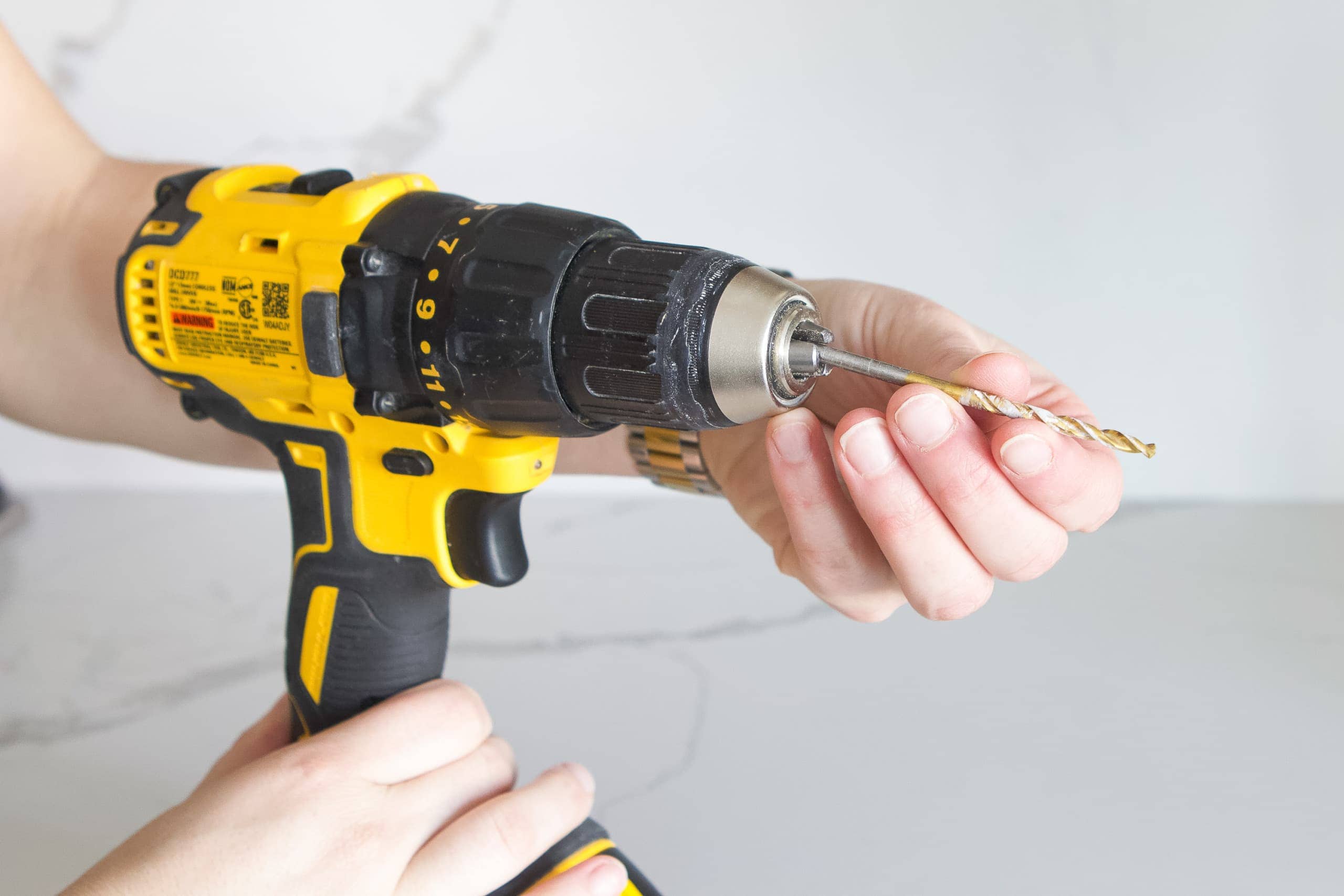

To change out bits, you’ll need to loosen and tighten the drill chuck by hand. Make sure the bit is snug by tightening the chuck until its teeth fully grip the bit.
For most modern drills, this is done using a keyless chuck, which makes it quick and easy to swap out bits.
How to Use A Power Drill
Before you start, it’s always a good idea to follow some basic safety precautions. Wear protective eyewear, make sure your work surface is stable, and keep your hands away from the drill bit. Also, start at a lower speed if you’re not sure how much force is needed.


A drill is powered by the trigger switch located on the handle. Press it, and the drill chuck will start to rotate.
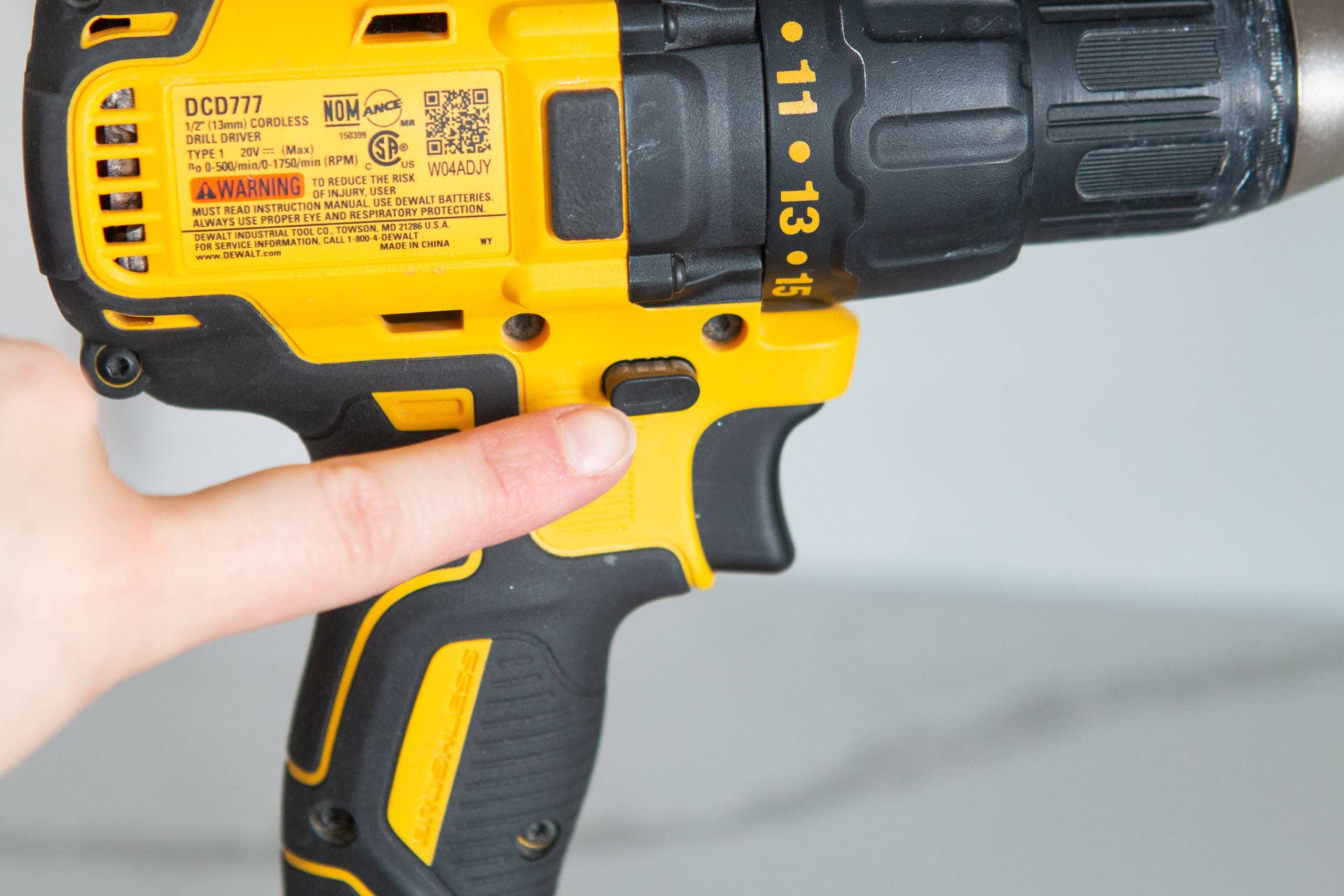

You can change the direction of the drill bit by flipping the forward/reverse switch, usually found on the left side of the drill. For instance, if you’re removing a screw from a piece of furniture, you’ll want to switch the drill to reverse, so it rotates counterclockwise.
Once you get the hang of using your cordless drill, you will easily be able to switch from clockwise to counter-clockwise in an instant.
How Do I Change The Speed?
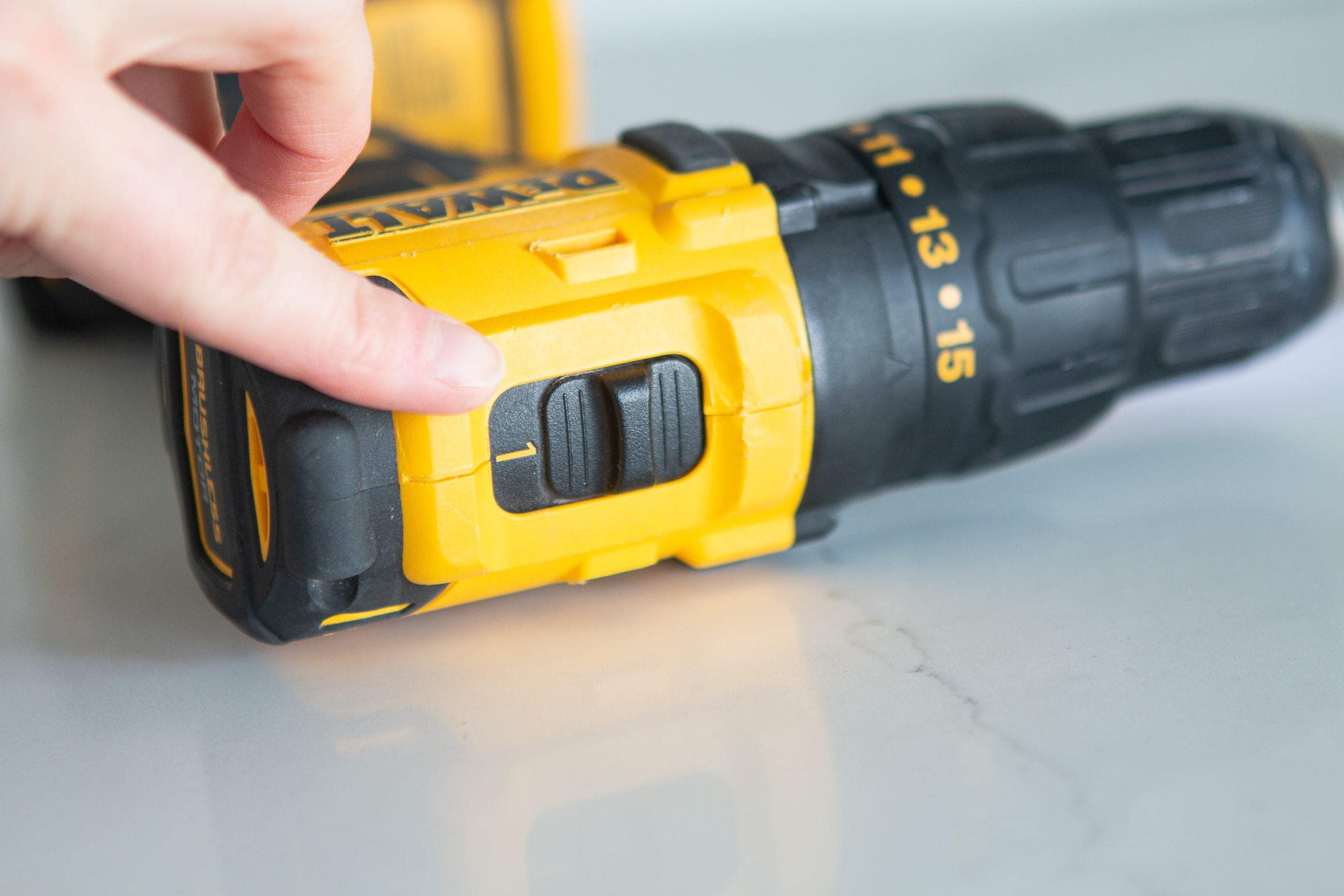

On my drill, there’s a “1” and a “2” on top, which control the speed settings.
You’ll want to use the slower speed (1) for driving screws and the higher speed (2) for drilling holes. It’s easy to switch between the two by flipping the gear switch, depending on whether you need more speed for your project.
What Do All Of The Numbers On The Collar Mean?


The numbers on the collar refer to the drill’s torque, which is the amount of force the drill applies to turn an object—not how fast it spins.
With the torque settings, you’ll typically see numbers ranging from 1 up to 20. The higher the number, the more torque your drill will deliver. I usually recommend starting with a low torque setting and increasing it if needed, depending on your project.
You Convinced Me – Which One Should I Buy?


If you’re mainly doing small household projects, this cordless model is the way to go. Here’s the kit I would recommend. It comes with a charger and battery. You’ll just need to buy bit sets based on your project needs.
Go Forth & Use Your Power Drill
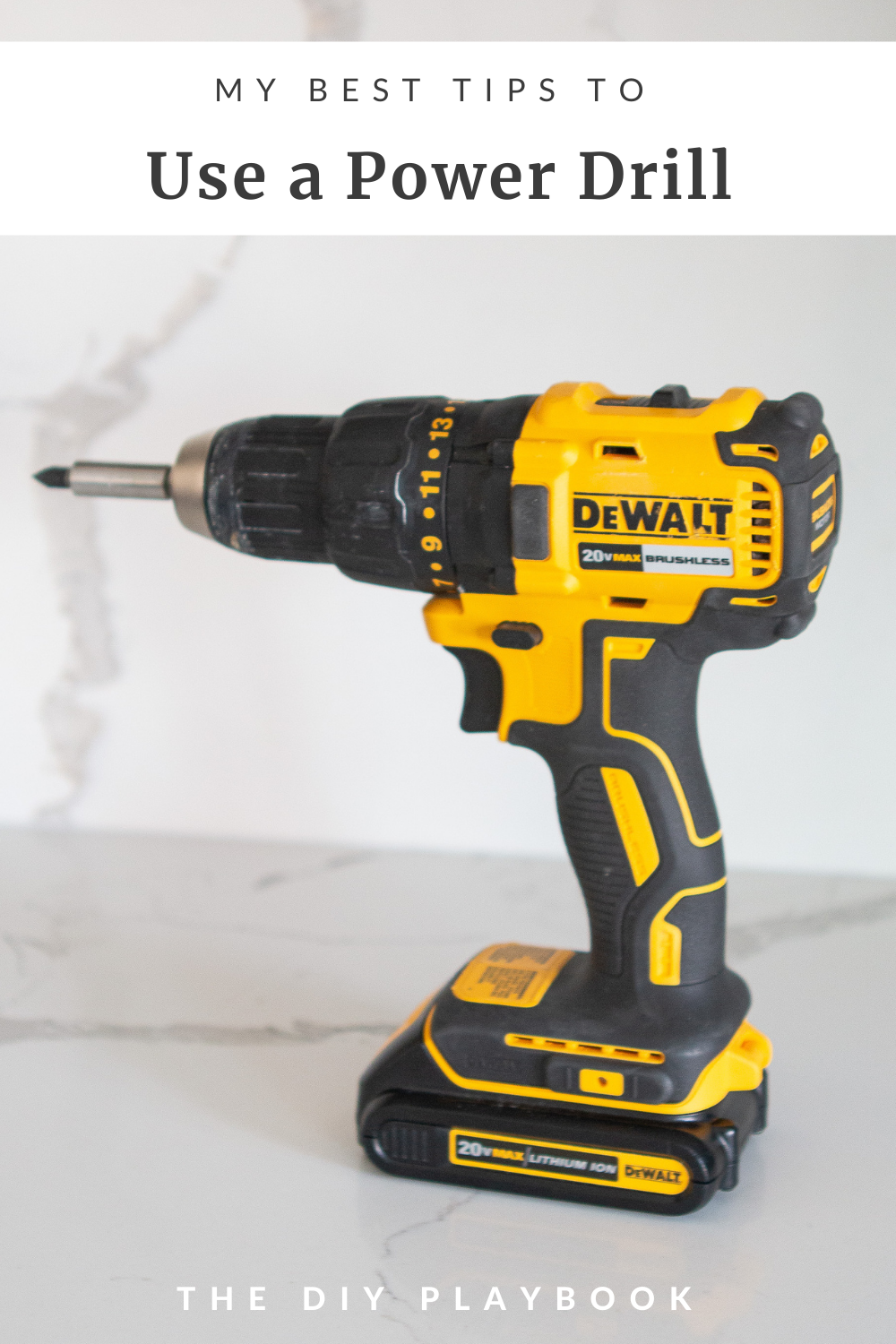

Using a new tool can be intimidating at first, but there is no reason to be scared of this one. The likelihood that you’ll hurt yourself or damage your home is slim to none. Just go slow, practice, and enjoy it!
Power tools are meant to assist your project, and a power drill will do just that. Once you start using one, you’ll wonder how you ever did everyday home tasks without it. Grab that drill of yours (fully charged of course!) and get to work.
I promise you’ll do great, and maybe even get a little arm workout in, using your very own power drill.
Casey
